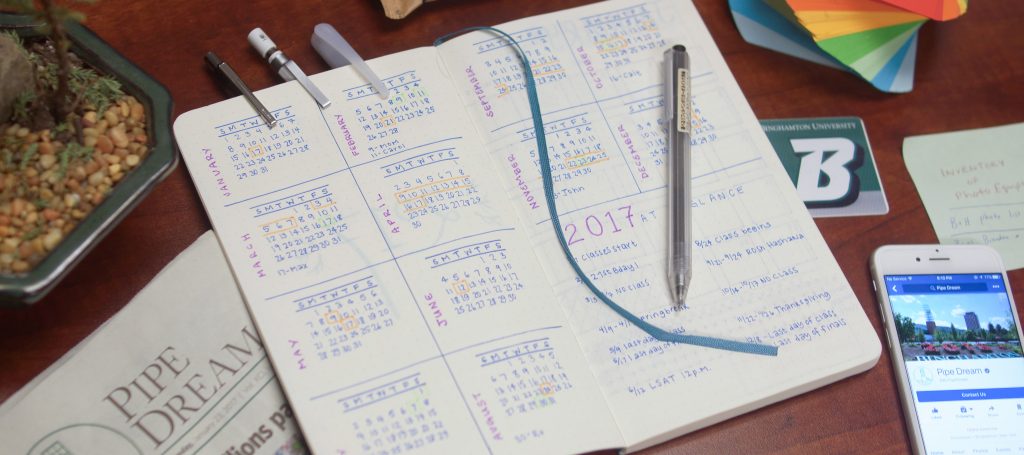If you’re hoping to maintain your 2017 resolution of staying organized, there’s a new way of journaling that keeps your to-do list, calendar and diary together, all conveniently located in one pocket-sized notebook.
Bullet journaling emerged as the idea of Brooklyn-based designer Ryder Carroll in 2013, as a technique to stay organized and efficient. The idea of using dotted pages to journal continues to gain popularity for all types of journal-users, as it allows users to create short, bulleted statements and to draw neat frameworks for planning their future.
1. To start, you’ll need a journal you like and a pen.
The bullet journal website suggests you purchase the official Bullet Journal, but any similar notebook can really do the job. A dotted Moleskine or Leuchtturm1917 bullet journal are good alternatives; as long as you have the dotted layout, you’ll be in good shape.
Any pen or pencil is fine, but it all depends on how much time you want to put into making your bullet journal. Oftentimes, creative people who use bullet journals use colored markers to make elaborate designs and signifiers, while busier journal-users might just opt for plain black and blue ink. How you choose to design your journal and log your thoughts is all up to you, so make it as colorful — or as neutral — as you please.
2. Research some popular designs, or create your own that fits your needs.
The creators suggest a system called rapid logging, a method that advises utilizing index pages, page numbers, short sentences and bullets. This being said, feel free to stray beyond this and make something that best fits your needs.
The rapid logging layout includes planning your year, month, week and day and signifying what tasks or ideas you have using bullets. Using the dots on the page, you can create neat calendar layouts, customize them for size and design, and neatly place bullets and text. The future log is a suggestion for staying organized a year in advance, by planning out big events for all of 2017. Then comes the monthly log, where you can create a bird’s-eye view of each month’s tasks. Finally, the daily log is for day-to-day journaling of whatever you want to plan that day. The index at the front of the book ties it all together, so you can easily access each section of the journal.
Signifiers, or small marks next to tasks, represent various assignments:
• A simple bullet is any thought, task or diary entry
— Dashes are meant to represent notes for that day, month or year
◦ Open circles stand for events
Once the task is completed, you cross out the bullet or draw an arrow to migrate the task to another day.
However, because the book is versatile and rules don’t have to be followed, many people who use bullet journals take the liberty to include anything and everything in the journal. Events, notes, thoughts and reminders can be creatively cataloged, but also which movies you’ve seen that year and how many cups of water you drink per day can be artistically incorporated into how you plan your bullet journal. Journal-users can draw calendars, write to-do lists or brainstorm ideas for class.
Various Instagram accounts post new styles and designs to inspire fellow people who use bullet journals, and popular accounts include @journalspiration and @craftyenginerd.
3. Don’t be discouraged.
The bullet journal was created as an alternative to a normal journal or pre-printed planner, but if the upkeep of designing your own planner sounds like too much, it might not be for you.
If you forget to journal, don’t fret; the point of the bullet journal is to stay organized according to your own schedule, so don’t be discouraged if you fall behind in journaling or planning. You might feel pressured to create beautiful designs and make the bullet journal into a hobby, but remember that it’s all for your own benefit and fun, so make it your own. Whether simple and neat or colorful and creative, it should be designed to fit your organization goals.



